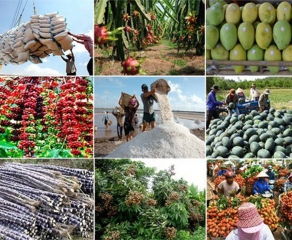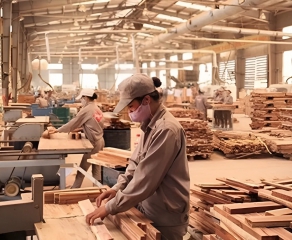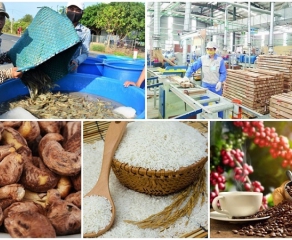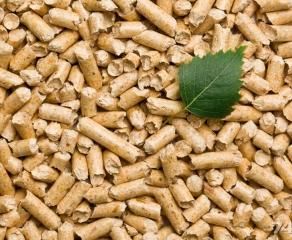Enterprises exporting imported peeled wood are ambiguous in their declarations to avoid taxes
The Vietnam Timber and Forest Products Association (Vifores) proposed increasing the export tax on HS 4408 peeled wood products to 25%, equivalent to the current export tax rate of 25% on HS 4407 sawn timber products...
The Vietnam Timber and Forest Products Association (Vifores) proposed increasing the export tax on HS 4408 peeled wood products to 25%, equivalent to the current export tax rate of 25% on HS 4407 sawn timber products...
Peeled wood exports to China have increased dramatically recently
The Vietnam Timber and Forest Products Association (Vifores) has just received an official dispatch from the Plywood Association (under Vifores) calling for help on the problem of "bleeding" of plywood raw materials from planted forests exported to the Chinese market. National...
RAW MATERIALS PRICES ARE INCREASING, PLYWOOD PRODUCTION FAILS
The dispatch clearly states: In recent times, the Plywood Association has received a lot of feedback from members about the "bleeding" of plywood materials to the Chinese market. Specifically, from October 2020 until now, the volume of peeled boards made from acacia wood and planted eucalyptus wood has been exported to the Chinese market in very large quantities.
The increased purchase of peeled wood by traders to export to China has caused a serious shortage of this material in the country and increased prices. According to feedback from members, the purchasing price of AB filler boards in main material areas such as Bac Giang, Lang Son, Phu Tho, Yen Bai, Tuyen Quang, Ha Giang, etc. ranges from 3,200,000 VND/month. m3 to 3,750,000 VND/m3 (up 10%-15% over the same period last year).
The purchasing price of rubber AB boards in the Binh Duong, Binh Phuoc, Dong Nai area ranges from 4,600,000 VND/m3 to 4,800,000 VND/m3. The increase in raw material prices causes difficulties for businesses producing plywood for export in our country.
Some members are concerned that veneer exporters are declaring customs values lower than the actual value of the product in order to reduce export tax payments. Currently, this item has an export tax of 10%. Customs declaration below the product value causes an invisible loss of budget revenue for the state, creating a bleeding of raw materials to the Chinese market, a shortage of raw materials for domestic production.
Currently, most of the companies exporting veneer products are commercial companies, but when preparing export documents, they often declare that they are Veneer processing businesses that buy round wood directly from farmers to avoid tax refunds. VAT.
Therefore, the Plywood Association requested the Vietnam Timber and Forest Products Association to propose to the Ministry of Finance to impose a minimum price on exported peeled plywood products made from acacia wood, eucalyptus wood, fat wood, and forest linden wood. planted at FOB price (delivery on vehicle price) of at least 160 USD/m3; For peeled boards produced from rubber, the minimum FOB price is 200 USD/m3.
In addition, it is proposed to increase the export tax on HS 4408 peeled wood products to 25%, equivalent to the current export tax rate of 25% on HS 4407 sawn timber products. Strictly control export plywood origin records to protect raw material sources for domestic production, creating momentum for the development of the plywood industry.
EXPORT OF PLYWOOD HAS MANY PROSPECTS
Speaking exclusively with VnEconomy, Ms. Cao Thi Cam, Chief of Office of the Vietnam Wood and Forest Products Association, said that Vietnam's plywood exports have grown rapidly. If in 2015 plywood exports only reached 724 thousand m3, by 2020 the export of this product will reach 2.09 million m3, reaching 659.74 million USD.
There are about 72 countries and territories consuming Vietnamese plywood, but plywood exports are mainly concentrated in 5 countries including: Korea, USA, Japan, Malaysia, and Thailand, accounting for over 84% of the total volume. and plywood export turnover from Vietnam in 2020.
Of which, Korea imported 805.19 thousand m3 of plywood from Vietnam, reaching 211.03 million USD, accounting for 38% of the total amount of plywood exported by Vietnam. Next, the US imported 517.88 thousand m3 from Vietnam, with a turnover of 243.52 million USD. Malaysia is the third largest market, importing 231.71 thousand m3, reaching 62.81 million USD in 2020, an increase of 29% in volume and 21% in value.
In 2020, Japan imported 170.2 thousand m3 from Vietnam, with a turnover of 43.24 million USD, an increase of 5% in volume and 2% in value. Thailand imported 144.44 thousand m3 of plywood from Vietnam, reaching 42.92 million USD in 2020, an increase of 33% in volume and 32% in value compared to 2019.
From a country with only about 1% of the world's plywood export market share in 2015, Vietnam now accounts for 5% of the total global export market share, ranking 5th in the world in exporting this product. .
According to the Vietnam Wood and Forest Products Association, plywood is not only used as input material for the production of wooden products but also as a material in the construction and flooring industry. On average, the world spends about 16-17 billion USD each year to import this product, with an import volume of about 32-34 million m3.
Facing the potential demand of the market, the plywood production industry in Vietnam is developing very quickly. There are over 340 enterprises participating in the production and export of plywood products in 2020. In 2020, there are about 20 large and small scale factories that have gone into plywood production or are building new factories. in provinces such as Thanh Hoa, Tuyen Quang, Bac Kan, Quang Ngai, Quang Nam, Quang Binh...
In addition, we also witnessed a shift in foreign investment in FDI projects producing this product when the number of capital increases and capital contributions to buy shares increased. In particular, in 2020, Vietnam received two new projects to produce plywood products with an investment capital of over 14 million USD, with an expected capacity of 100,000 m3/year.
However, the biggest difficulty in the plywood production industry is the lack of raw materials, because domestic forest production does not meet demand. In 2020, Vietnam spent about 2.55 billion USD to import raw wood, of which 227.27 million USD was spent importing peeled boards and plywood.
“Currently, China is still the world's leading supplier of plywood, accounting for over 30% of the global market share in both volume and value. The export of peeled wood to China is causing many consequences, reducing the competitiveness of our country's glue industry," Ms. Cam shared.
Businesses have been focusing on investing in modern equipment to produce many complex products. This has helped businesses produce many high-quality, high-quality products that meet the tastes of domestic and world consumers.
The number of workers working in wood and forest product processing enterprises has also increased, to date there are more than 500,000 workers, of which trained and stable workers account for 55-60%.
“The wood industry business community needs to continue to invest in wood processing factories with advanced technology with capacity appropriate to each planted forest material area; Apply mechanization and automation to reduce labor costs, save and utilize raw materials for processing, while creating uniformity and ensuring product quality," the Minister recommended.
You should invest in projects that use waste by-products from wood processing, produce wood glue and accessories for the wood processing industry. Along with that, it is necessary to develop the industry of manufacturing machinery and forestry equipment, and the industry of producing supporting materials for the wood processing industry. At the same time, resources must be socialized to support the building and development of Vietnamese wood product brands. Strive to bring the value of exported wood and non-wood forest products to 18 to 20 billion USD by 2025 and 23-25 billion USD by 2030.
ELECTRONIC MAGAZINE





